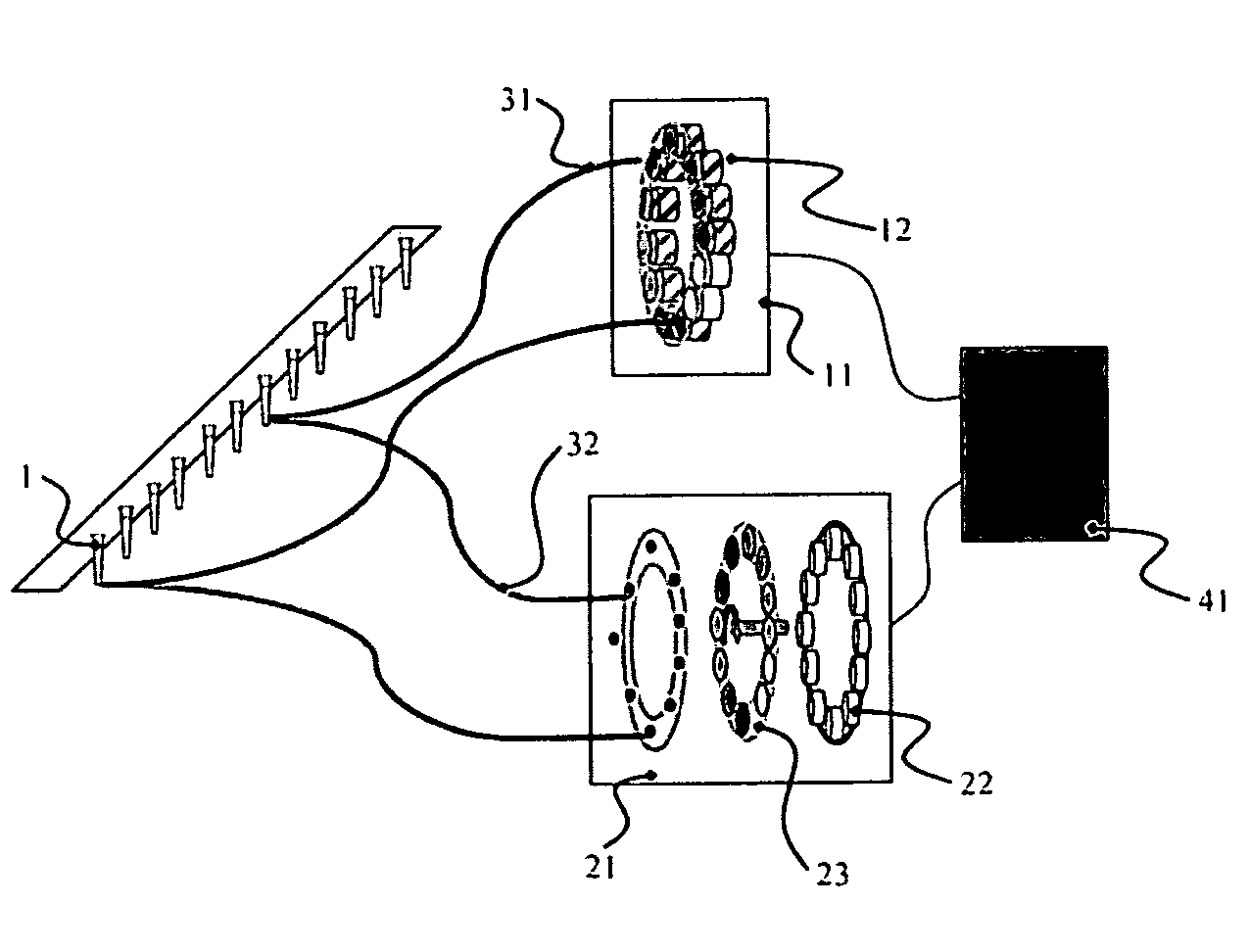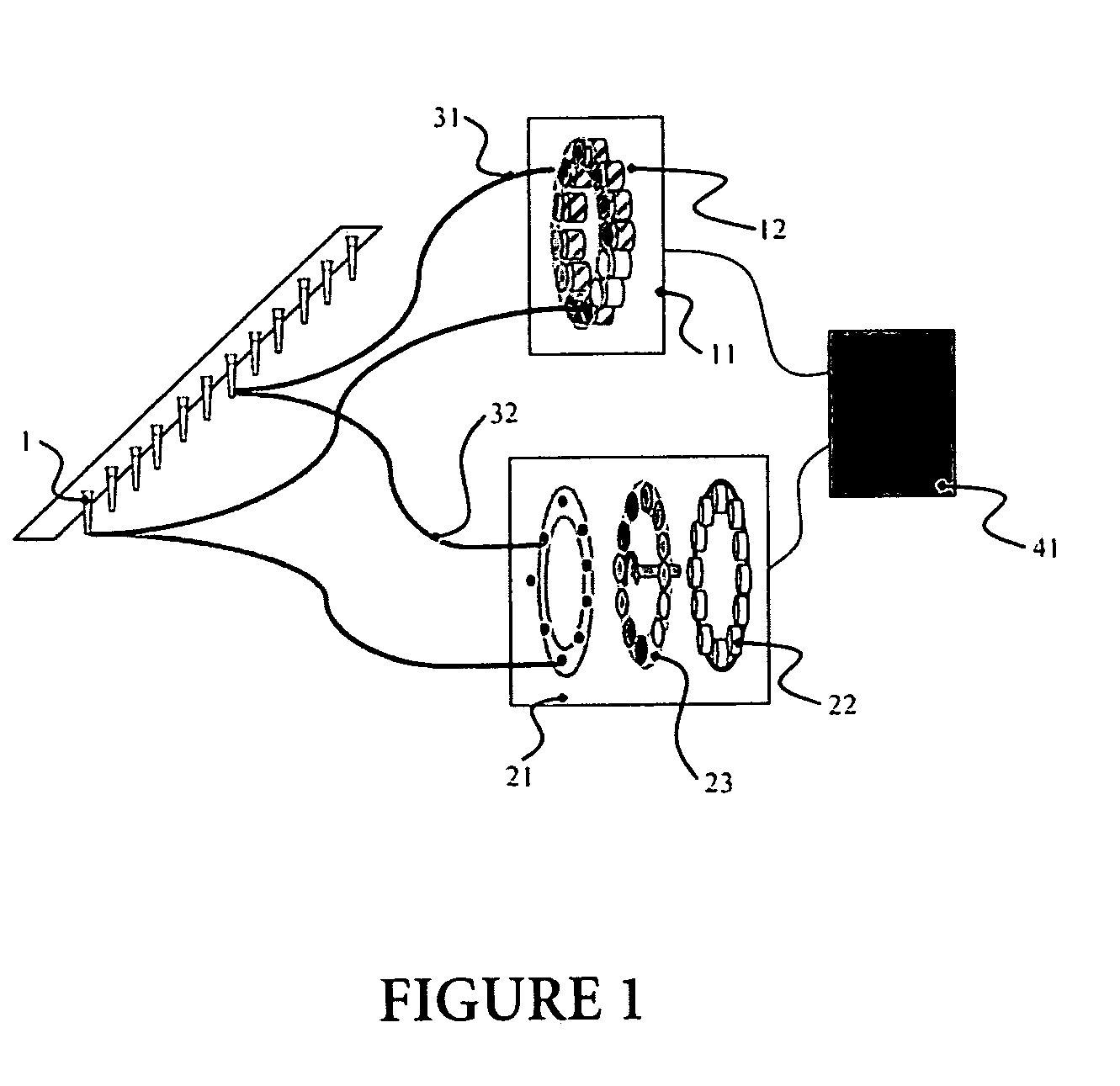Apparatus for emitting and detecting light in a nucleic acid amplification reaction
a nucleic acid amplification and light technology, applied in the direction of radiation measurement, optical radiation measurement, spectral modifiers, etc., can solve the problems of increasing maintenance efforts and costs, elongated measuring times, and low spectral power of some white light sources (particularly halogen bulbs), so as to shorten the sequence measurement time, shorten the specific measurement step, and increase the optical power at each reaction region
- Summary
- Abstract
- Description
- Claims
- Application Information
AI Technical Summary
Benefits of technology
Problems solved by technology
Method used
Image
Examples
example 1
[0067]The following examples and figures are provided to aid the understanding of the present invention, the scope of which is set forth in the appended claims. It is understood that modifications can be made in the embodiments set forth herein without departing from the spirit of the invention.
[0068]A real time multiplex PCR run with an Hepatitis C Virus (HCV) clean target of known concentration and a quantification standard (QS) was performed using two apparatuses according to the invention. In each reaction region, 50 μl PCR reagent mixtures (44.6 μl Master Mix containing an appropriate forward and reverse primer along with 5.4 μl Mn2+-buffer per sample) were provided along with 25 μl of the HCV target having a concentration of 1×106 copies / μl and 25 μl of a quantification standard (QS) at a concentration of 40 copies / μl. The master mix, the Mn2+-buffer and the quantification standard are from commercially available reagent kits (Roche cobas TaqMan® HCV Master Mix: Kit no. 580041...
PUM
| Property | Measurement | Unit |
|---|---|---|
| Time | aaaaa | aaaaa |
| Power | aaaaa | aaaaa |
| Melting point | aaaaa | aaaaa |
Abstract
Description
Claims
Application Information
 Login to View More
Login to View More - R&D
- Intellectual Property
- Life Sciences
- Materials
- Tech Scout
- Unparalleled Data Quality
- Higher Quality Content
- 60% Fewer Hallucinations
Browse by: Latest US Patents, China's latest patents, Technical Efficacy Thesaurus, Application Domain, Technology Topic, Popular Technical Reports.
© 2025 PatSnap. All rights reserved.Legal|Privacy policy|Modern Slavery Act Transparency Statement|Sitemap|About US| Contact US: help@patsnap.com



